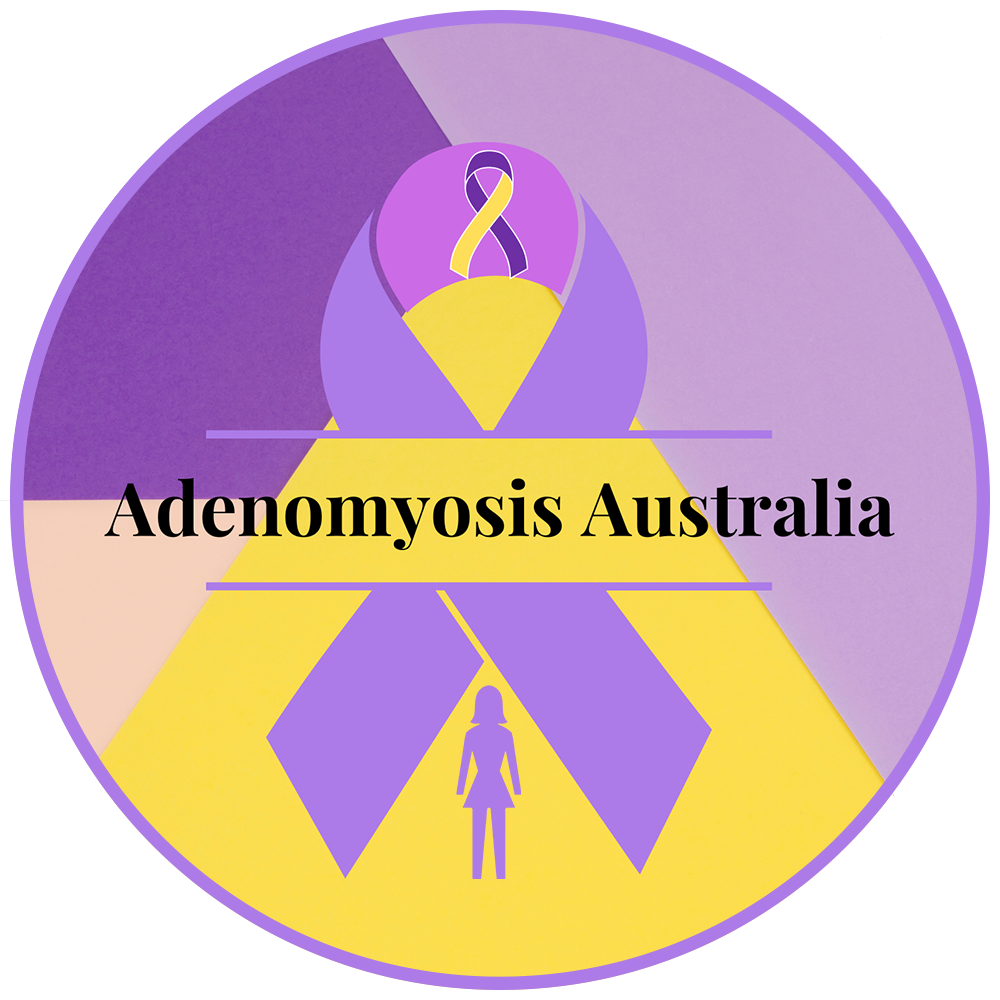Adenomyosis
What is Adenomyosis?
Adenomyosis is a disorder in which cells from the uterine lining (the endometrium) are discovered within the uterine muscle layer (the myometrium). It affects around one in ten women of reproductive age and is most prevalent among childbearing women aged 40 to 55.

Normal Uterus

Adenomyosis Uterus
Adenomyosis
What Causes Adenomyosis?
The pathogenesis of adenomyosis is not well understood but it is possible that weakened bonds between the myometrial muscle cells allow the migration and implantation of endometrial cells within the muscle layer. This process may result from a cycle of repeated injury and attempted healing at the endometrial/myometrial interface. Female sex hormones then result in the maintenance and progression of the condition.
It is likely that there are also genetic and immunological factors involved in the development of the condition. There is no known way to prevent the condition.
Adenomyosis
What is Endometriosis?
Endometriosis is a disorder characterised by the growth of endometrium-like tissue outside the uterus. This is sometimes referred to as endometriosis implants or lesions.
Symptoms of Endometriosis
Endometriosis is a significant cause of menstrual discomfort, persistent pelvic pain, and infertility.
Endometriosis symptoms are quite varied and may range in intensity over time in the same individual. Both the severity and types of symptoms may not coincide with the disease’s extent and locations.
Adenomyosis
How is Endometriosis diagnosed?
The presence of endometriosis may be suspected if certain symptoms are present. An examination of the pelvis may be able to help physicians identify the scar tissue that has been created by the implants. Endometriosis affects 10% of women, and in such individuals, ultrasound may reveal the existence of chocolate cysts, which are cysts that develop inside the ovaries.
Laparoscopy is the only method available at this time that can both verify the presence of endometriosis and assess the severity of the condition if it is present. Endometriosis may be directly observed during this one-day examination that takes place in a hospital under the influence of general anaesthesia. The procedure involves the use of a little telescope that is inserted through a tiny cut made near the umbilicus.
Despite their being a greater awareness of the disease, research has revealed that it still takes an average of eight to nine years from the start of the first symptoms until a diagnosis is verified. This frequently results in years of unnecessary suffering as well as a delay in therapies that are suitable and helpful.
Endometriosis can be effectively treated, and its long-term problems can be avoided by beginning therapy as early as possible. Nevertheless, early detection is still essential.
Adenomyosis
Fibroids
What are fibroids?
Uterine fibroids are benign tumours that grow at a slow rate and can be discovered in the uterus. Fibroids are the most prevalent type of uterine tumour, and it is believed that anywhere from 30 to 70 percent of women who are of reproductive age may have fibroids. Fibroids rarely cause any health problems.
A malignant or cancerous transformation in a fibroid, known as leiomyosarcoma, is extremely uncommon. The frequency of this condition is believed to be 0.2% of all uterine fibroids. There is currently no good clinical, imaging, or blood test that can differentiate between a fibroid and a leiomyosarcoma. Both conditions affect the uterus. When the fibroid or uterus has been surgically removed, histology is used to make the diagnosis.
Do fibroids cause symptoms?
Most women who have fibroids do not have any unusual symptoms, and as a result, these women may never be aware that they have the condition. The presence of fibroids can be discovered by accident during a regular pelvic examination when they are mistaken for an enlarged uterus or during an ultrasound scan that is performed as part of a standard prenatal screen.

Uterine Fibroids
Adenomyosis
Urinary Incontinence
Urinary incontinence (UI) is a frequent condition that may cause a great deal of anguish and discomfort to many women. Its prevalence in the community has been found to range from up to 40% all the way up to 80% in some cases.
Maintaining urinary continence is dependent on the normal function of the urethra and bladder, as well as the surrounding connective tissue and pelvic floor muscles, as well as the peripheral and central neurological systems.
Damage or disruption to this essential environment may be caused by the biochemical changes associated with pregnancy and ageing, anatomical or neuro-muscular injury associated with childbirth, chronic straining or constipation, neurological disorders, or side-effects from certain types of medications.
Stress urine incontinence, often known as SUI, is the most frequent kind, accounting for fifty percent of all instances. There are situations in which more than one form of incontinence may be present.
Seeking the opinion(s) and assessment of your primary care physician and/or a specialist can, in most cases, help you overcome urine incontinence or make the condition much better.
Image reference (below):
1. Stress Incontinence due to increased abdominal pressure under stress (week pelvic floor muscles).
2. Urge Incontinence due to involuntary contraction of the blader muscles.
3. Overflow Incontinence due to blockage of the urethra.
4. Neurogenic Incontinence due to disturbed function of the newvois system.

Uterine Fibroids
Adenomyosis
Caesarean Section
What is a Caesarean section?
Caesarean section, C-section, or Caesarean birth is the surgical delivery of a baby through a cut (incision) made in the mother’s abdomen and uterus. Health care providers use it when they believe it is safer for the mother, the baby, or both.
Caesarean hysterectomy refers to removal of the uterus at the time of caesarean delivery. It is a technically challenging procedure owing to the anatomic and physiologic changes of pregnancy, including a massive increase in blood flow to the uterus at term. The surgery’s dramatic nature stems from the fact that it is frequently performed in emergent, unplanned situations when a mother’s life is in danger and because it permanently ends future fertility. The procedure is unfortunately becoming more common largely owing to the rising primary caesarean delivery rate in the United States.
Postpartum hysterectomy refers to hysterectomy done either after vaginal delivery or caesarean delivery skin closure after caesarean section, whereas caesarean hysterectomy is done in the same surgical case as caesarean delivery. Postpartum hysterectomies are largely unplanned and often done on an emergent basis for obstetric haemorrhage or undiagnosed abnormal placentation.
Adenomyosis
Menopause
When a woman has not had her period for 12 months in a row and is unable to become pregnant through natural means, she is said to have entered menopause. It often starts between the ages of 45 and 55, however it can start earlier or later than this age range.
The change in hormone levels that occur during menopause can result in uncomfortable symptoms, such as hot flashes and weight gain. Menopause is a natural transition that does not require treatment in most cases.
Most women experience the onset of their initial menopausal symptoms around four years before their final menstruation. It is not uncommon for symptoms to persist for up to four years after a woman has had her final period.
Menopausal symptoms can begin as early as ten years before the actual onset of menopause in some women. Moreover, around one in ten women will continue to suffer menopausal symptoms for a full 12 years after their final menstrual cycle.
The average age of menopause is 51, however it can happen anywhere from one to two years sooner.
There are several factors, including genetics and the health of the ovary, that can help predict when a woman will begin the menopause. The transition into menopause is known as the perimenopause. A woman’s hormones will begin to shift in preparation for menopause throughout the perimenopause stage of her life.
There is a wide range of possible durations, from a few months to several years. Once they reach the middle of their 40s, a lot of women start experiencing the symptoms of perimenopause. Some women may not go through the perimenopause and go straight into menopause.
Approximately one percent of women have early menopause, also known as primary ovarian insufficiency. This condition is characterised by the onset of menopause before to the age of 40. Between the ages of 40 and 45, the menopause affects around 5 percent of all females. This is referred to be menopause in its early stages.
Perimenopause vs. menopause vs. post menopause
During perimenopause, menstrual cycles become irregular. It’s possible that your periods may be late or that you’ll entirely miss one or more of them altogether. It is also possible for the flow of menstruation to become thicker or lighter.
The absence of menstruation for a period of 12 consecutive months is the clinical definition of menopause.
Post menopause is a term that describes the years that follow the menopausal transition
Adenomyosis
Symptoms of Menopause
Every woman’s menopausal experience is unique. When the menopause comes on quickly or when it lasts for a shorter amount of time, the symptoms typically manifest in a more severe manner. Diseases that have a negative influence on ovarian health, such as cancer or hysterectomy, as well as certain lifestyle choices, such as smoking, tend to worsen the intensity of symptoms and the length of time they last.
The symptoms of perimenopause, menopause, and post menopause are largely the same for the most part, apart from variations in menstruation. The following is a list of the most typical early indicators of perimenopause:
If you have larger or lighter periods than you typically do, you may develop vasomotor symptoms (VMS). These symptoms include night sweats, flushing, and hot flashes.
It is claimed that 75 percent of women go through menopause with experiencing hot flashes.
Other common symptoms of menopause include:
- insomnia
- vaginal dryness
- weight gain
- depression
- anxiety
- difficulty concentrating
- memory problems
- reduced libido, or sex drive
- dry skin, mouth, and eyes
- increased urination
- sore or tender breasts
- headaches
- racing heart
- urinary tract infections (UTIs)
- reduced muscle mass
- painful or stiff joints
- reduced bone mass
- less full breasts
- hair thinning or loss
- increased hair growth on other areas of the body, such as the face, neck, chest, and upper back
Adenomyosis
Why does Menopause occur?
Menopause is a natural process that occurs as the ovaries age and produce less reproductive hormones.
The body begins to undergo several changes in response to lower levels of:
- estrogen
- progesterone
- testosterone
- follicle-stimulating hormone (FSH)
- luteinizing hormone (LH)
The reduction in the number of functional ovarian follicles is one of the most noticeable alterations. Ovarian follicles are the structures that are responsible for the production of eggs and their subsequent release from the ovarian wall. This process is necessary for both menstruation and fertility.
Most women initially become aware that the regularity of their period is changing when they experience thicker and longer flow throughout their periods. This often takes place somewhere in the middle to late 40s of a person’s life.
In certain instances, menopause can be artificially produced, or it might be the result of an injury or surgical removal of the ovaries and other associated pelvic tissues.
When a woman reaches menopause, her menstrual periods stop occurring on their own. Menopause typically begins about age 52, however pelvic or ovarian injury might result in premature menopause. Early menopause can be caused by both genetics and underlying disorders.
In the years leading up to menopause, many women suffer the usual menopausal symptoms of hot flashes, nocturnal sweats, and flushing. Menopause symptoms may last for up to four years.
If your symptoms are severe or negatively impact your daily life, you may want to consider treatment options including hormone therapy. Natural therapies and a change in lifestyle can often alleviate or significantly lessen the severity of menopausal symptoms.
Please consult your physician to determine the most appropriate course of treatment.




